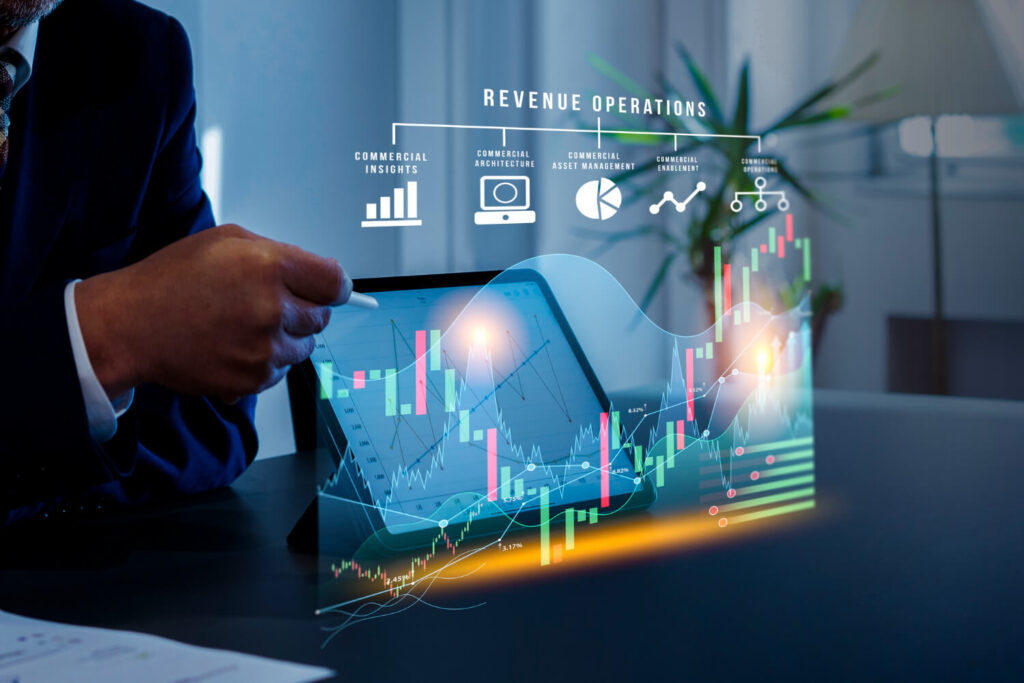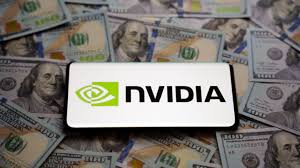AI in Finance Revolution Financial Industry

Introduction
Artificial Intelligence (AI) has transformed the banking and financial sector. The introduction of emerging technologies like machine learning, natural language processing, and predictive analytics has had a strongly impactful influence on the functioning, decision-making, and customer interaction of banks and other financial organizations. AI in finance adoption in the financial sector enhanced efficiency, mitigated risk, and improved customer experience. This blog discusses how finance is being transformed with AI, thoroughly laying out its applications, advantages and disadvantages, and predictions.

The AI in Finance Revolution
Finance AI has matured from simple rule-based models to advanced self-learning models that can handle enormous amounts of data in fractions of a second. Traditional statistical models were originally employed by financial institutions to provide recommendations for decision-making. But the deluge of information, the advances in computing power, and the advances in AI algorithms have now proceeded to alter the environment. Contemporary AI machines are able to execute complicated tasks like sentiment analysis, predictive modeling, and anomaly detection that were unable to be done previously. With information becoming increasingly real-time and granular, the potential for AI to be able to read and react to the information increases, allowing institutions to make quicker, better, and more informed decisions.
Applications of AI in Finance
Anti-Fraud Detection and Prevention
Anti-fraud detection is perhaps the most powerful application of AI in finance. Conventional fraud detection controls are playing catch-up to dynamic threats. AI systems are, however, able to process huge amounts of transactional data, identify patterns of normal behavior, and mark anomalies as potential patterns of fraud. Machine learning applications get better with time by learning from new data, so their detection becomes more accurate. Real-time alert and behavioral biometrics allow financial companies to respond quickly on suspicion, protecting the business and customers. AI is also used to detect novel fraud patterns using unsupervised learning to detect new threats prior to epidemic levels.
Credit Scoring and Risk Assessment
AI has transformed credit scoring with the use of non-traditional data sources like mobile phone usage, social networking, and payment history to determine creditworthiness. This has stretched out to provide credit to hitherto excluded groups. Secondly, AI algorithms can assess risk dynamically by considering continuously changing borrower behavior and economic conditions. This results in better and equitable lending decisions with reduced defaults and enhanced financial inclusion. Borrowers can now be offered micro-loans by lenders from population segments that lack a conventional credit history, thereby broadening financial services even more. 2.3 Algorithmic Trading
The basis of advanced algorithmic trading strategies is AI.
Firms who engage in high-frequency trading employ AI algorithms to analyze the market, find trades to make, and execute trades within milliseconds. The computers can also learn behaviors to manage marketplace scenarios and create trading efficient and less susceptible to human mistakes. AI sentiment analysis from news headliner interpretation, social media trends, and market indicators further limit trading potential. In addition, AI models are able to simulate various market conditions in order to try across different scenarios, so more firm and well-educated investment decisions are possible. 2.4 Personal Finance Management
AI-powered personal finance tools have provided financial planning for all people.
Applications like Mint, Cleo, and YNAB use AI to track people’s expenses, provide budget advice, and suggest saving. The technology provides current information and enables their owners to make informed decisions with their money. AI also drives chatbots and virtual assistants that answer monetary queries, monitor spending, and offer customized money advice. Some applications even include estimated savings plans that enable the owner to save on an automated basis based on anticipated cash flow, payments, and savings objectives. 3. AI for Banking Operations

Virtual Assistants and Chatbots
The customer service in banking has been revolutionized with AI-driven chatbots and virtual assistants.
They operate 24 hours a day, 7 days a week, and can undertake a range of queries, from account balance checks to complex financial transactions. Natural language processing enables them to understand and reply to customer inquiries in natural language. This not only reduces the burden on human customer support staff but also increases customer satisfaction levels by providing instant and correct solutions. Sophisticated AI assistants can now carry out activities such as money transfer, reminders, or even product suggestion against the specifications of the customer.
Process Automation
Robotic Process Automation (RPA) driven by artificial intelligence is revolutionizing the back-office functions of banks. Automation can be applied to data capture, document authentication, and compliance verification, lowering costs and processing time. AI further enhances these activities with the addition of cognitive abilities, which enable systems to process unstructured data and make decisions based on context. This has facilitated faster new-client onboarding, faster loan approval, and more consistent customer engagement at touchpoints.
Wealth Management and Robo-Advisors
With the arrival of AI-based robo-advisors, wealth management is now within the reach of the masses.
They apply algorithms to determine an investor’s risk profile, time frame, and goals, and construct and rebalance a diversified portfolio as per these. They review and rebalance portfolios from time to time as per market scenarios and investor profile shifts. This automation saves costs and does away with the necessity for costly financial advisors, thus becoming more economically viable to manage investments. Furthermore, some of the platforms have tax-loss harvesting and goal-based planning, thus making investment planning more feasible and effective.
Risk Management and Compliance
Reg Tech and AI
Regulatory Technology or Reg Tech is used to tap the power of AI in Finance in making financial institutions comply with intricate regulations in the best manner possible. AI-based systems are able to track transactions in real time, detect suspicious activity, and produce compliance reports. They can even read and amend based on changing regulatory conditions and thereby maintain real-time compliance. This lowers the risk of reputation loss and fines through regulatory non-compliance. Aside from this, through the application of AI for continuous auditing and smart reporting, companies are able to reduce the mistakes made by humans and mechanize the in-house operations.
Market Risk and Operational Risk Analysis
AI in Finance models play a central role in risk management in the area of predicting possible market disruption and system breakdown. AI models can utilize past data, simulate theoretical situations, and predict possible outcomes. Detection of risks at an early stage allows financial institutions to pre-empt them, maintaining stability and resilience. Predictive analytics-based AI predictive analysis software aids in organizations’ ability to foresee black swans and develop contingency mechanisms, thereby strengthening institutional risk position.
Artificial Intelligence in Insurance and InsurTech
With the growth of AI in Finance , the insurance sector is also changing. From underwriting to claims payment, speed and precision are being enhanced using AI. Through AI systems, high amounts of data can be analyzed to determine risk more accurately and charge the same. In the case of claim settlement, AI in Finance can authenticate facts, identify fraud, and speed up payment, leading to customer satisfaction. Customized insurance products based on individual behavior and interest are also gaining momentum. For example, usage-based automobile insurance and wearable device-based health insurance are gaining momentum because AI is capable of managing continuous input data.
Predictive Analytics and Forecasting

The predictive analytics capability made possible by AI in Finance allows the capability of the financial institutions to predict market conditions, customer behavior, and economic conditions. These are used for strategic decision-making, including product launches, investment plans, and advertising initiatives. AI models have the ability to predict from time-series data, detect patterns, and make precise predictions with high accuracy, thus developing a competitive advantage for the companies. Predictive analytics would assist retail banks, for example, in forecasting customer churn or in making recommendations on customized financial products, resulting in enhanced customer satisfaction and retention.
Ethics and Concerns of AI in Finance
Fairness and Bias
AI models are as good as the training data. If the training data is biased, the AI models can reflect and even amplify those biases, producing unfair results. Biased credit score models, for instance, can result in discriminatory lending. To make AI in Finance fair is to use diverse training data, regular audits, and transparent algorithms. Regulators and governments increasingly require explanations of decisions made by AI, and this has spurred the creation of Explainable AI (XAI) architectures in finance.
Data Privacy and Security
Financial AI in Finance necessitates processing vast volumes of sensitive information, with resultant privacy and security threats. Financial organizations need to have well-grounded controls on data privacy and adhere to regulation like GDPR. Differential privacy and federated learning can potentially withstand privacy attacks without foreclosing data-driven insight. In addition, AI can also be utilized to identify authentic-time cyber attacks, helping to deliver a twin benefit to organizations that want to make use of both data utility and protection.
Job Displacement
While AI in Finance augments efficiency, replacement of jobs is one threat it poses by way of mundane work. It does pose new kinds of jobs as well in areas like data science, AI development, and digital financial services. Upskilling and reskilling are required to support the workforce in adjusting to the AI-financial future. The banks are requested to embrace a human-in-the-loop strategy where AI would complement human capability, not substitute it. Conclusion

FinTech AI in Finance is reshaping the sector by strengthening it, making it accurate, and customer-oriented. Whether it is anti-money laundering or credit scoring, investment management or risk analysis, AI in Finance is enabling smarter, quicker, and more inclusive financial services. But with the pace of adoption accelerating, there is an urgent need to overcome the ethical, privacy, and jobs hurdles posed by AI. With the proper combination of regulation and innovation, AI in Finance can help brighten the finance of tomorrow. Strategically and responsibly adopting AI in the future will drive the financial services sector to an era of greater innovation and trust.







